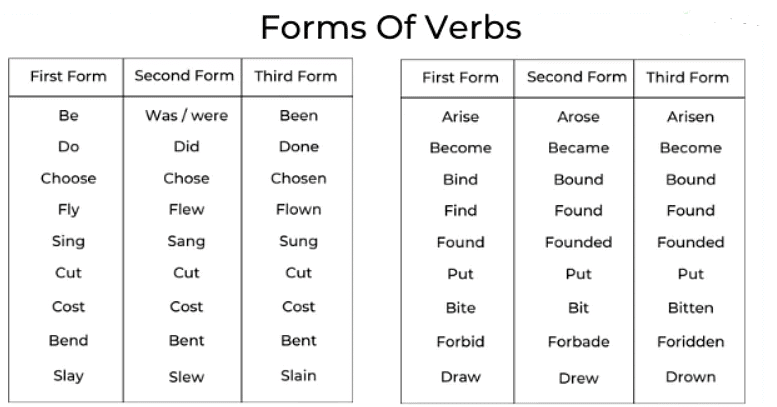Important Rules: Voice | English Language & Comprehension for SSC CGL PDF Download
Voice
In general English language, the transitive verb has two voices mainly Active voice and Passive voice.
Active Voice
- sentence has a subject that acts upon its verb.
Example – She scolded him
Passive Voice
- a subject is a recipient of a verb’s action.
Example – He was scolded by her.
Rules For Voice - Active & Passive Voice
1. Converting Active to Passive – Identifying Subject, Verb & Object
The initial step in converting voices involves identifying the subject, verb, and object in the sentence.
- Subject + Verb + Object
Example:
- She eats an apple – (Subject – She, Verb – Eats, Object – Apple)
- I wrote a letter – (Subject – I, Verb – Wrote, Object – Letter)
- He plays a piano and drums – (Subject – He, Verb – Plays, Object – Piano and drums)
2. Converting Active to Passive – Interchanging Forms
During the transformation from active to passive, the subject and the object switch their positions. The subject becomes the object, and the object becomes the subject.
Example:
- Active voice: She sings classical (Subject – She, Verb – sings, Object – Classical)
- Passive Voice: Classical is sung by her. (Here, the subject and object interchange. Now, Subject – Classical, Verb – sung, Object – her).
- Active Voice: He visits school
- Passive Voice: School is visited by him.

3. Converting Active to Passive – Ignoring the Subject
At times, while converting from active to passive, the subject can be omitted if the sentence remains coherent without it.
Example:
- Active Voice: The police arrested her.
- Passive Voice: She was arrested. (Here, the subject 'police' is omitted as 'arrested' implies it was done by the police.)
- Active Voice: We sell milk in litres
- Passive Voice: Milk is sold in liters. (In this case, using 'we' as the subject would be redundant.)
4. Converting Active to Passive – Changing Base Verb
When changing a sentence from Active to Passive Voice, the base verb is replaced with the past participle and is preceded by prepositions like by, in, with, at, to.
Example:
(i)
- Active voice: She cooks meals.
- Passive voice: Meals are cooked by her.
(ii)
- Active voice: I know him.
- Passive voice: He is known to me.
(iii)
- Active voice: Water fills the bottle
- Passive voice: The bottle is filled with water
(iv)
- Active Voice: The box contains red balls
- Passive Voice: Red balls are contained in the box.
(v)
- Active Voice: His actions shock me.
- Passive Voice: I am shocked at his actions.
5. Converting Active to Passive – Changing Pronouns

6. Converting Active to Passive – Tense Transformation
Present Tense:
Simple Present tense:
- Active Voice: Subject + Verb + Object (Mary eats a banana)
- Passive Voice: Subject + past participle + by object (A banana is eaten by Mary)
Present Continuous Tense:
- Active Voice: Subject + is/am/are + verb(ing) + object (She is doing her task)
- Passive Voice: Subject + is/am/are + being + past participle + by object (The task is being done by her)
Past Tense:
Simple Past Tense:
- Active Voice: Subject + past verb + object (She cleaned the blackboard)
- Passive Voice: Subject + was/were + past participle + by object (The blackboard was cleaned by her)
Past Continuous:
- Active Voice: Subject + was/were + verb(ing) + object (I was reading a book)
- Passive Voice: Subject + was/were + being + past participle + by object (A book was being read by me)
Past Perfect:
- Active Voice: Subject + had + past participle + object (He had left the food)
- Passive Voice: Subject + had been + past participle + by object (The food had been left by him)
Future Tense:
Simple Future Tense:
- Active Voice: Subject + will + infinitive verb + object (I will read the newspaper)
- Passive Voice: Subject + will + be + past participle + object (The newspaper will be read by me)
Future Continuous:
- Active Voice: Subject + will be + present participle (ing) + object (Mary will be watching the news today)
- Passive Voice: Subject + will be + being + past participle + by object (The news will be being watched by Mary today)
Past Future Tense:
- Active Voice: Subject + would + infinitive + object (I would live in this house)
- Passive Voice: Subject + would be + past participle + object (This house would be lived in by me)
7. Converting Active to Passive – Imperative Sentence
- For imperative sentences, the object 'YOU' is often omitted.
- The basic formula is: Let + object + be/not be + V3 (third form of the verb).
- Sentences using words like request, expect, or order are converted to request to, expected to, or ordered to in passive voice.
- Words like please or kindly in requesting sentences are omitted from the passive voice.
Examples:
(i)
- Active Voice: Do it
- Passive Voice: Let it be done
(ii)
- Active Voice: Close the door
- Passive Voice: Let the door be closed
(iii)
- Active Voice: Do not open the letter
- Passive Voice: Let the letter not be opened
|
136 videos|209 docs|146 tests
|
FAQs on Important Rules: Voice - English Language & Comprehension for SSC CGL
| 1. What is the difference between active voice and passive voice? |  |
| 2. Why is it important to understand the rules for active and passive voice? |  |
| 3. How can I identify whether a sentence is in active voice or passive voice? |  |
| 4. When should I use active voice in my writing? |  |
| 5. Are there any instances where passive voice is more appropriate than active voice? |  |

















